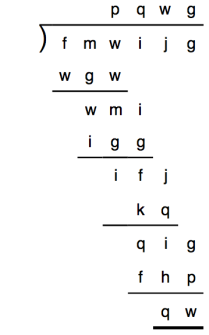Sales Mix and Sales Mix Variance: Explanation, Formula, and Example
Content

Discontinued products have not contributed to this year’s results because they stopped being sold before or during this year. First, we’ll look at a method for doing Price Volume Mix variance analysis that is very popular online, let’s call it “The Mix Change Method”. Despite its popularity, we do believe there is a better way to tackle this analysis. However, this method is popular enough that we want to show you how to do it in Excel using Zebra BI for Office. In this article, we’ll explore how you can improve your business reports by including a Price Volume Mix analysis. We’ll explain the three concepts and demonstrate how to prepare your data for the analysis in Excel.
- This information helps companies understand how well their products are performing, providing valuable information about the potential profitability of their products.
- Sales mix is the contribution of sales from different products or categories to the company’s total sales.
- Compute the product cost per meal produced under absorption costing and under variable costing.
- The cost of revenue is the total cost of manufacturing and delivering a product or service and is found in a company’s income statement.
Helps the management understand the reasons for deviation from the budgeted sales mix and reconsider their decisions. In addition, it helps to understand the performance of various products concerning sales and profitability and each product’s contribution to the business. Based on this sales mix, sales managers can go to marketing and advise that more advertising budget be allocated to the weight-lifting set than to the heat-tech running jacket for the next quarter. Even though the price of the product is lower, the profit margin is higher, so the company will make more profit overall by selling weight-lifting sets than heat-tech running jackets.
Resources created by teachers for teachers
To calculate sales mix, begin by understanding the profitability of each product your company sells. Sales mix is the proportion of sales in individual product accounts for in a company’s total sales. You can find sales mix by comparing the profit earned by a specific product to the total amount of sales brought in by the company during a specific period of time. We should calculate the contribution margin per unit for each product as the first step in break-even analysis for the sales mix. This Price Volume Mix analysis gives you an insightful overview. What is going on with our product mix and are we pushing more profitable products?
Now let’s calculate the sales mix variance for each product. Let’s say our supplement company has a goal of selling 750 total units, 500 units of multivitamins and 250 units of protein powder, during a sales period. During this period, the company actually sells 1000 total units, consisting of 700 units of multivitamins and 300 units of protein powder. Through these calculations, we can see that the more multivitamins you sell, the more profitable your sales mix is. It doesn’t mean your company should discontinue selling protein powder, however, it could mean devoting more focus to selling multivitamins could lead to more profit.
Sales Mix Variance
The cost and profitability of each product need to be identified to find the optimal mix. This means for every $100 worth of protein powder your company sells, it contributes $40 to the bottom line. This means for every $100 worth of multivitamins your company sells, it results in $75 of profit. Learn how to use the sales revenue formula so you can gauge your company’s continued viability and forecast more accurately. Increase marketing for the weight sets, as they have a high profit margin and are worth pushing. It sounds complicated, but as we’ll see in the next section, the formula is quite simple.
To improve your company’s sales mix, you need to understand sales mix variance. When you dig into what your company’s sales mix is, you uncover hard data that tells you exactly how much money the sale of each product is contributing to the bottom line. Product A sold 500 units, and that was enough to hit the necessary sales mix percentage. Product B, however, how to calculate sales mix sold 800 units when it needed to sell 895 units to meet its sales mix percentage. That’s a difference of 95 units, or 2 percent in sales mix percentage . It’s worth noting that sales mix can also refer to the variety of products sold by a company (or the “mix” of “sales,” if you will), but for business purposes, we’re going to use the definition above.




